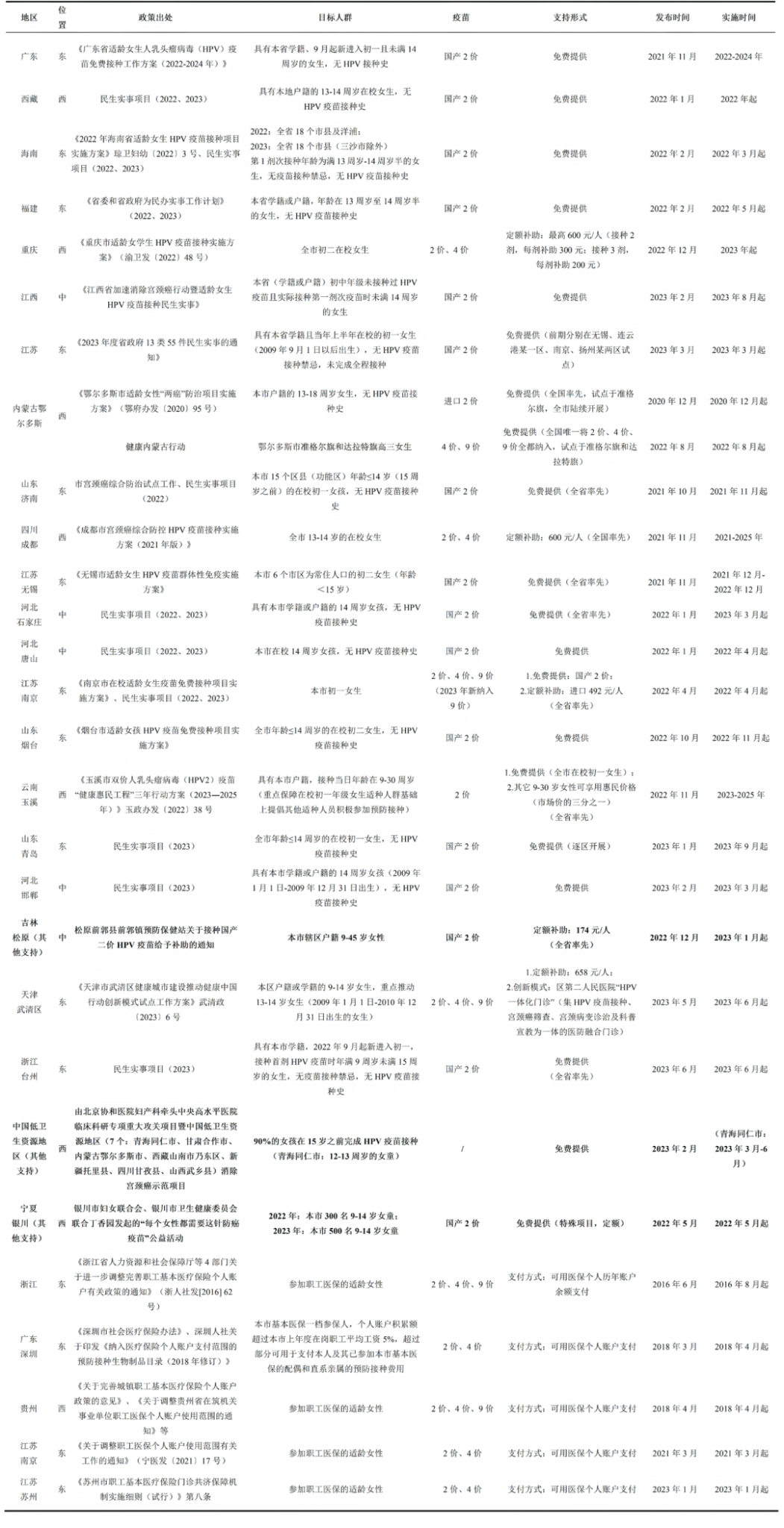Journal Article Recommendation
01
The indirect effect of the bivalent human papillomavirus vaccination program: an observational cohort study
This study, published in BMC Medicine, adopted an observational cohort study design to evaluate the indirect protective effect of the bivalent human papillomavirus (2vHPV) vaccination program in the Dutch national immunisation program, 8–13 years after its implementation, among unvaccinated female populations. Based on two cohort studies* (HAVANA cohort and HAVANA-2 cohort), the indirect effect of HPV vaccination was assessed using dual regression analysis methods.
First, based on a Poisson regression model, the incidence rate ratios (IRRs) of vaccine-related types and non-cross-protective types were compared between the HAVANA-2 cohort (2017–2022) and the HAVANA cohort (2010/2011–2015/2016), with the indirect effect defined as (1 – IRR ratio). Second, a Cox proportional hazards model was applied, using infection with vaccine-related types as the endpoint event. After adjusting for time-varying sociodemographic variables, the hazard ratio (HR) between cohorts was calculated, with the indirect effect defined as (1 – HR).
The results showed a significant decline in HPV16 infection rates in the HAVANA-2 cohort compared to the HAVANA cohort. Poisson regression analysis indicated a 70.9% reduction in HPV16 infections (95% CI: 48.3–83.7%); Cox regression results showed a 73.1% reduction (95% CI: 53.3–84.5%). In addition, HPV45 infection rates also showed a significant decrease, with indirect protective effects of 67.3% (95% CI: 8.8–88.3%) and 69.8% (95% CI: 15.2–89.3%) respectively. Although HPV18, HPV31, and HPV33 also exhibited downward trends, their estimated values did not reach statistical significance. Combined-type analysis indicated an indirect protective effect of 62.4% (95% CI: 42.6–75.4%) for HPV16/18 and 41.7% (95% CI: 9.4–62.4%) for HPV31/33/45. Sensitivity analyses demonstrated robust results.
The study indicates that even under relatively low vaccine coverage (approximately 54%), the 2vHPV vaccination program can still significantly reduce the risk of high-risk HPV infections—particularly HPV16 and HPV45—among unvaccinated females through herd immunity.
*HAVANA cohort: Follow-up from 2010 to 2016, including 661 unvaccinated females born in 1993/1994, corresponding to the 3-dose vaccination policy introduced in 2009; HAVANA-2 cohort: Follow-up from 2017 to 2022, including 927 unvaccinated females born in 2001, corresponding to the 2-dose vaccination policy implemented in 2014.
https://doi.org/10.1186/s12916-025-04155-2
02
Evaluation of vaccine uptake and opportunity of in-hospital vaccination against pneumococcus in vulnerable hospitalized patients
This article, published in Vaccine, adopted a cross-sectional observational study design to systematically assess the current status of pneumococcal vaccination and its associated factors among inpatients in the Internal Medicine Department of a secondary public hospital in Spain, and to explore the feasibility of implementing catch-up vaccination during hospitalization. A total of 388 inpatients from the Internal Medicine Department were enrolled. Data were collected through medical record review and questionnaire survey. Vaccination indications were determined according to the 2022 Andalusian Vaccination Guidelines, and catch-up vaccination was administered to eligible hospitalized patients.
The results showed that 330 patients (85.7%) met the indication criteria for pneumococcal vaccination, but only 180 patients (54.4%) had previously received PCV vaccination, and 276 patients (83.6%) with indications had not been correctly vaccinated at the time of admission. Through in-hospital catch-up vaccination, 192 patients (49.7%) successfully received PCV13 vaccination. Significant differences in vaccination coverage were observed among patients with different underlying conditions: patients with chronic heart failure had the highest coverage (59.4%), followed by those with diabetes mellitus (57.5%), while patients with neoplasia (50.9%) and chronic hepatopathy (26.7%) had relatively lower coverage. Multivariable analysis found that female patients (OR = 1.74, 95% CI: 1.13–2.68) and those with a history of COVID-19 infection (OR = 3.50, 95% CI: 1.36–9.01) had significantly higher risk of being unvaccinated.
The study indicates a substantial deficiency in pneumococcal vaccination among hospitalized patients—particularly older adults with multimorbidity. Despite meeting the indication criteria, the vaccination rate remains low in this population. The study found that systematic screening and catch-up vaccination during hospitalization can significantly improve vaccination coverage among high-risk groups and may serve as a critical window for public health intervention.
*2022 Andalusian Vaccination Guidelines: These guidelines were issued by the Consejería de Salud y Familias (Andalusian Regional Ministry of Health and Families) and serve as regional implementation protocols under the framework of the Spanish National Immunization Program.
https://doi.org/10.1016/j.vaccine.2025.127364
03
A ninth-year follow-up survey of attitudes and behaviors of obstetricians and gynecologists toward HPV vaccination in Japan
This study, published in Scientific Reports, employed a repeated cross-sectional study design to systematically track changes in attitudes and actual vaccination behaviors of obstetricians and gynecologists in Japan before and after adjustments to the HPV vaccination policy. In 2013, the Japanese government suspended its proactive recommendation for HPV vaccination due to unconfirmed safety concerns, and the recommendation was not reinstated until May 2022. This study represents the fifth round in a series of surveys and is the first to evaluate professional responses following the policy resumption.
In January 2024, questionnaires were distributed to 632 obstetricians and gynecologists affiliated with Osaka University Hospital, and 348 responses were collected (response rate: 55.1%). Results showed that 98.3% (337/343) of respondents supported the government’s reinstatement of the recommendation, 98.2% (336/342) agreed on the necessity of routine vaccination for adolescents, and 74.4% (258/347) supported the inclusion of HPV testing in cervical cancer screening. The policy shift led to notable behavioral changes—nearly 90% of physicians reported that their daughters had received or planned to receive the HPV vaccine. During the suspension period, 63.6% (35/55) of physicians still ensured their daughters received the vaccine, and this proportion showed a significantly increasing trend over time (p = 0.017).
In the present survey, among physicians whose children were eligible for the government’s “free catch-up vaccination program,” the vaccination rate reached 71.4%. However, the study also indicated that financial barriers may affect the sustainability of vaccine uptake. After the end of the catch-up program, individuals are required to pay out of pocket for vaccination, costing approximately 50,000–100,000 JPY (around 330–660 USD). In addition, regarding HPV vaccination for boys, physicians demonstrated a high level of agreement but relatively conservative vaccination practices. A total of 76.9% of respondents supported routine vaccination for boys, a significant increase compared to the previous survey round (p < 0.001). Among physicians with sons aged 12–16 years, only 12.5% (4/32) reported their sons had received the vaccine; among all physicians with sons aged 12 or above, the proportion was 5.9% (7/119). Notably, future vaccination intentions had increased significantly, with 56.0% of physicians expressing plans to vaccinate their sons under 16 years of age.
The study indicates that most respondents had completed or planned HPV vaccination for their daughters, and a portion had also initiated vaccination for their sons. The authors suggest that further encouraging physicians from other specialties to lead by example in vaccinating their children may help establish a broader norm within the professional community and promote more comprehensive HPV vaccine uptake in Japan.
https://doi.org/10.1038/s41598-025-02980-2
04
The effect of school-based interventions on HPV vaccine-related knowledge, attitudes, and practices among adolescents in France: Secondary results from the PrevHPV trial
This study, published in Vaccine, employed a cluster-randomized controlled trial design to evaluate the effectiveness of various school-based interventions in improving HPV vaccine-related knowledge, attitudes, and practices (KAP) among adolescents in France. Using an incomplete factorial design, 2,758 adolescents aged 13–14 years from 91 French municipalities were randomly assigned to one of six intervention combinations. The study systematically assessed the independent and combined effects of three components: in-school education, free in-school vaccination, and general practitioner (GP) training. Baseline and follow-up data were collected via online self-administered questionnaires.
Results showed that the in-school education intervention significantly improved adolescents’ knowledge and enhanced their motivation toward vaccination. Among those receiving this intervention, the odds of perceiving the benefit-risk balance of vaccination as favorable increased by 60% (OR = 1.6, 95% CI: 1.2–2.0), and the likelihood of recognizing the importance of reducing virus transmission rose by 50% (OR = 1.5, 95% CI: 1.1–2.1). Additionally, adolescents in this group were 80% more likely to have discussions about HPV vaccination with friends (OR = 1.8, 95% CI: 1.2–2.6).
The free in-school vaccination component significantly enhanced perceived accessibility: adolescents were more likely to know their friends’ vaccination status (OR = 3.1, 95% CI: 2.2–4.2) and to report that vaccination was easily accessible (OR = 2.2, 95% CI: 1.5–3.2). While GP training improved adolescents’ perceived ease of obtaining vaccine-related information, it was also associated with a reduction in perceived ease of discussing vaccination with family and peers (OR = 0.76, 95% CI: 0.61–0.96). Furthermore, adolescents from multilingual households reported a 50% increase in perceived difficulty in accessing clear vaccine information following the interventions (OR = 0.5, 95% CI: 0.2–0.9).
The study concludes that in-school education effectively enhances adolescents’ HPV-related knowledge and positive attitudes, while free in-school vaccination reduces perceived barriers to access. In contrast, the effect of GP training was relatively limited. The findings suggest that future HPV vaccination strategies should prioritize in-school education, expand in-school vaccine delivery programs, and develop culturally and linguistically adapted educational materials for families from multilingual backgrounds.
https://doi.org/10.1016/j.vaccine.2025.127344
05
Opportunities and challenges of conducting vaccine research in low and middle-income countries in the Asia–Pacific region: perspectives from the Asia–Pacific Vaccine Research Network
This article, published in The Lancet Regional Health – Western Pacific, systematically summarizes the consensus outcomes from the 2023 workshop held by the Asia–Pacific Vaccine Research Network (APVRN). Low- and middle-income countries (LMICs) face numerous challenges in the field of vaccine research, including gaps in research capacity and funding, limited R&D capabilities, and regulatory barriers.*
The article highlights the heterogeneity of vaccine research ecosystems across the Asia–Pacific region. For instance, countries such as Thailand and the Philippines have established robust research frameworks through public–private partnerships, while others, including Lao People’s Democratic Republic and Mongolia, are constrained by infrastructure and workforce shortages. Research infrastructure varies among countries: some possess advanced laboratory capabilities and data systems, whereas countries such as Viet Nam and Indonesia rely on external partners due to their inability to meet international standards. Moreover, countries with strong public health systems tend to integrate research programs, while those with under-resourced systems often depend on private or external funding, which affects the sustainability of clinical trials.
To address these challenges, the article proposes: (1) institutionalizing and resourcing a learning health systems approach to inform policies and programs for improved health outcomes; (2) accelerating vaccine development through investment in vaccine R&D, capacity-building in academic institutions, and technology transfer via partnerships; (3) aligning local regulatory frameworks with WHO standards to streamline approval processes and enable cross-border trials; and (4) establishing regional regulatory hubs to expedite approvals and ensure consistency. In addition, scalable technologies can be co-financed through public–private partnerships.
Looking ahead, the Network will continue to promote collaboration in vaccine and immunization research across the region through a participatory model of South–South, North–South, and North–North engagement.
*The Asia–Pacific Vaccine Research Network (APVRN) was established in 2023, with founding members from eight countries in the region (Australia, Fiji, Indonesia, Lao People’s Democratic Republic, Mongolia, Thailand, the Philippines, and Viet Nam). Through its activities, the Network aims to contribute to the development of evidence-based immunization policy and to improve vaccination uptake, thereby benefiting the health and well-being of populations in the Asia–Pacific region.
https://doi.org/10.1016/j.lanwpc.2025.101559
Content Editor: Ruitong Li
Page Editor: Ruitong Li





